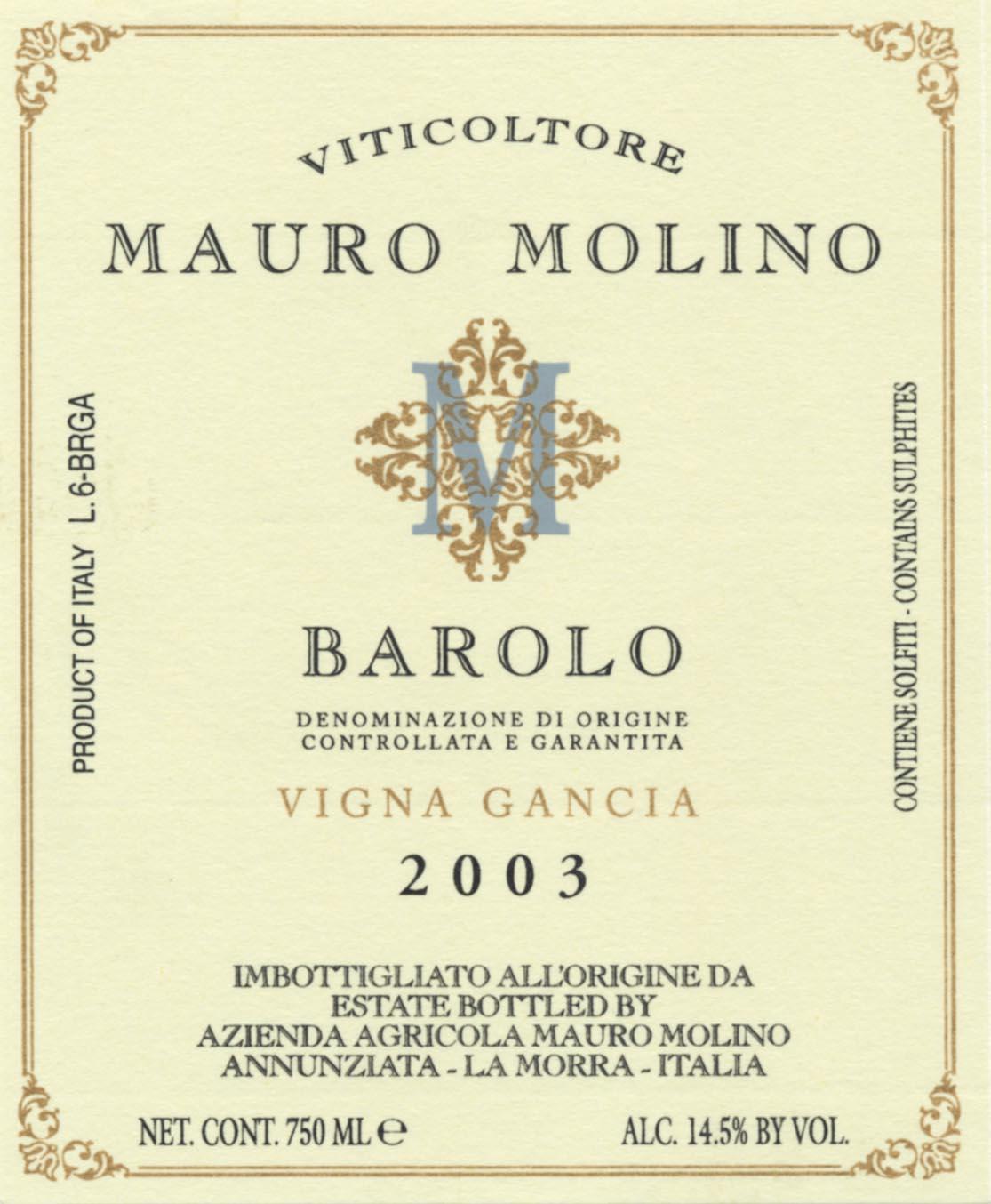2003 Barolo Red Blend
The Mauro Molino Vigna Gancia is a captivating red blend hailing from the prestigious Barolo region, renowned for its exceptional Nebbiolo grapes. This vintage from 2003 boasts a full-bodied structure, showcasing robust tannins that provide a firm backbone, leaving a lasting impression on the palate. Its acidity is notably bright, contributing to a lively and refreshing experience that enhances the complexity of flavors. The fruit intensity is prominent, with layers of dark cherry, blackcurrant, and hints of plum, beautifully intertwined with notes of earthiness and spice. The wine presents a beautifully dry profile, making it an outstanding companion for rich dishes, while its elegant finish invites another sip. This well-crafted wine exemplifies the artistry of Barolo winemaking and stands as a testament to its region's excellence.
The Mauro Molino Vigna Gancia is a captivating red blend hailing from the prestigious Barolo region, renowned for its exceptional Nebbiolo grapes. This vintage from 2003 boasts a full-bodied structure, showcasing robust tannins that provide a firm backbone, leaving a lasting impression on the palate. Its acidity is notably bright, contributing to a lively and refreshing experience that enhances the complexity of flavors. The fruit intensity is prominent, with layers of dark cherry, blackcurrant, and hints of plum, beautifully intertwined with notes of earthiness and spice. The wine presents a beautifully dry profile, making it an outstanding companion for rich dishes, while its elegant finish invites another sip. This well-crafted wine exemplifies the artistry of Barolo winemaking and stands as a testament to its region's excellence.




